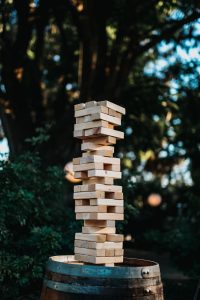This post is written by Charlene Aldrich. For more about Charlene, please visit the bottom of this page. The webinar recording for this material is embedded at the bottom of post.
How do we get students to read at home? We probably have to require it. We know in lower school, students are asked to read 15-20 minutes every evening. Students have free choice; parents monitor the requirement by initialing a document. But how can that requirement morph into a habit that positively affects the student’s academic future? “Let them choose” becomes the mantra. When given open choices, it’s human nature to struggle.
BUT when we provide themes, topics, or text sets to choose from, we make a choice manageable. It’s then that students fulfill our targeted purpose for outside reading. It’s then that students look at titles as a way of previewing the content of the text. It’s then that they engage in ‘reading to find out.’ It’s a win-win.
“I don’t have time to hunt down reading selections and/or books!” cry many content-area teachers everywhere. And maybe teachers won’t have the extra time during their first or second year of teaching. Or the first or second month of the year. HOWEVER, when teaching and planning become automatic, time becomes available to investigate the themes and text sets curated and available online. Content-area teachers can introduce reading selections of all genres; these support the ELA curriculum and provide background, cultural understanding, or applications of specific content-area curriculum. This is where the idea of parallel reading emerged – collaborating across the content areas in ways that grow overall literacy proficiency AND reinforce content-area learning.

Parallel – side by side, never touching. Reading – the crosstie that connects content areas. Juxtaposed with another discipline, text is a way to connect things that would otherwise run side by side. Through parallel reading, teachers approach their content from a literacy mindset. Take math, for example. One might say that reading is not necessary to do the math. However, knowing ‘pi’ is essential, but where did it come from? WHO first used it for achieving a measurement? WHEN did it come about? WHY was it necessary? A planning question becomes, “Who were the movers and shakers beginning at the onset of mathematical thinking and going forward?”
How do you implement your new mindset?
- Review the major topics of your curriculum. OR
- Look at the calendar for events or holidays. OR
- Look at the school calendar for half-days and identify a theme, especially those that are more social than curriculum related.
- Ask students what ideas they would like to explore, then factor their ideas into your curriculum and text set search.
- Ask the librarian to identify a wide range of texts and genres that connect to your theme or topic.
- Search in the following text set resources for reading selections connected to the theme or topic.
- Construct your curated list for your students to choose an interest to read and share.
- Most of all, limit the rabbit holes that you might find yourself in as you realize the plethora of choices that you can provide to your students.
Arousing curiosity and satisfying it with reading develops a positive attitude toward reading. It empowers students to read to ‘find out why’. While the answers to those questions are easily found with a Google search, connecting to the culture of the times happens best when biographies or primary sources are available for reading.
Text of all kinds becomes the primary connection between every content area. Students who read first-hand accounts of the Jim Crow era have a deeper understanding of the literature of that time. The struggle of the Indigenous people has a more significant impact when seen through their eyes in diaries, songs, and poetry. Understanding the building process of the pyramids or the Roman aqueducts connects math with sociology or history.
I alluded to curated text sets above and encourage you to investigate some of my favorite resources. NewsELA, ReadWorks, CommonLit are just a few places to find digital text sets created and classified by readability, theme, topic, holiday, and current events. One of my favorite articles is in NewsELA regarding Halloween and how much money is spent: nine billion dollars in 2018! Each of the above resources contains a wide variety of stand-alone reading/writing projects for those short classes on short days where there’s no time for an entire lesson!
Your teaching librarian can also curate book sets that support your curriculum. Other grade-level teachers may welcome the opportunity to collaborate on reading and writing assignments. Making connections across content-areas strengthens learning and increases the likelihood of creating lifelong learners.
Ponder my truisms about lifelong learning:
- Learning requires reading from diverse perspectives.
- Linking new learning to prior learning lays a foundation for future application.
- Social consciousness is developed when empathy is aroused.
- Citizenship has a whole new meaning when students discover that the ‘yous’ of this world are more important than the “I”.
Parallel reading projects grow a body of students who will begin thinking outside of their high school, content-area silo. That is certainly how they will live upon graduation. Stereotype book reports don’t have to be the outcome of parallel reading. How would your students like to communicate their reading experience to others? Encourage them to move beyond summaries (which can be found online) to how their perspectives have shifted because of the reading selection.
Try it. Identifying the selections is half of the fun! What’s the other half? Sharing them with your students. Through themes and topics, students can connect with text in ways outside of a required curriculum text. They can take ownership of their reading which just might result independent readers and learners.
Photo by Johannes Plenio on Unsplash

Charlene Aldrich is an instructor in the Office of Professional Development at the College of Charleston. While content-area literacy is her specialty, she also teaches Assessments in Reading, Foundations in Reading, and Instructional Practices as required by South Carolina for recertification. She serves as the Treasurer of LiD 6-12.




